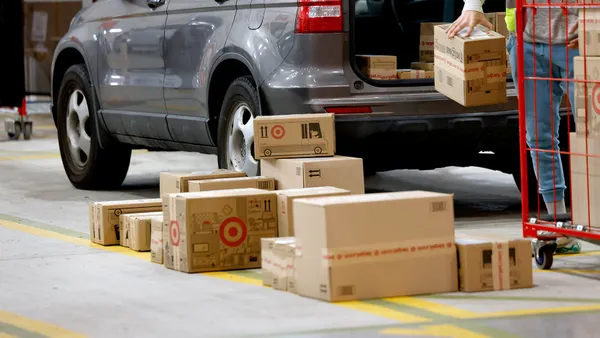Dive Brief:
- Increased focus on resilience in supply chains and the societal shift to e-commerce is expected to increase the demand for logistics real estate in the coming years, according to a report from Prologis.
- The report estimated that an additional 125 million square feet or more of warehousing space will be needed every year until 2025 in the U.S. and Europe, to keep up with current levels of e-commerce demand.
- Companies that choose to shift away from just-in-time practices in favor of resiliency and higher inventories could also drive up demand, Prologis found. Higher inventories associated with this shift could add 57 million square feet to 114 million square feet in demand over the next five years, according to the report.
Dive Insight:
E-commerce's pace of growth could slow with the introduction of coronavirus vaccines that allow consumers to seek out more in-person experiences, Prologis said. But the real estate company still expects e-commerce demand to continue growing as a result of changing habits, better technology and struggling brick-and-mortar locations.
Retailers and logistics providers have struck similar tones recently about their expectations for the future of e-commerce.
"We don’t think e-commerce sales as a percentage of retail sales will decline, which means continued supply and demand imbalances," UPS CEO Carol Tomé said on the company's earnings call last month.
Amazon, Target and Walmart are all investing heavily in their fulfillment networks to keep up with expected demand for e-commerce going forward. Amazon along increased the square footage of its fulfillment and logistics network by 50% in 2020.
E-commerce trends are expected to increase demand for warehousing space, in part because "e-commerce is more space intensive," the report reads. Online fulfillment requires three times more warehousing space than traditional retail, because there tends to be more product variety, and parcel shipping needs more space than pallet shipping, according to Prologis.
The shift to e-commerce will also affect brick-and-mortar operations that are simply trying to keep up, as omnichannel options such as buy online, pickup in store will require bolstered replenishment strategies. This is something Target is working to improve with two new distribution centers and increased investment in robotics.
A recent survey suggested increased interest in building more resilient supply chains following the coronavirus pandemic, which has highlighted the fragile nature of just-in-time and single-sourcing operations.
A survey from Gartner published in December found that 87% of respondents want to build more resilient supply chains within the next two years, and 58% said their executive leadership understood the cost associated with making that happen.
But the Gartner survey also found that respondents were split on plans to increase inventory as a way to build resiliency. It found that 46% of them have no plans to increase inventory within the next two years, but 43% are investing in safety stock now.














